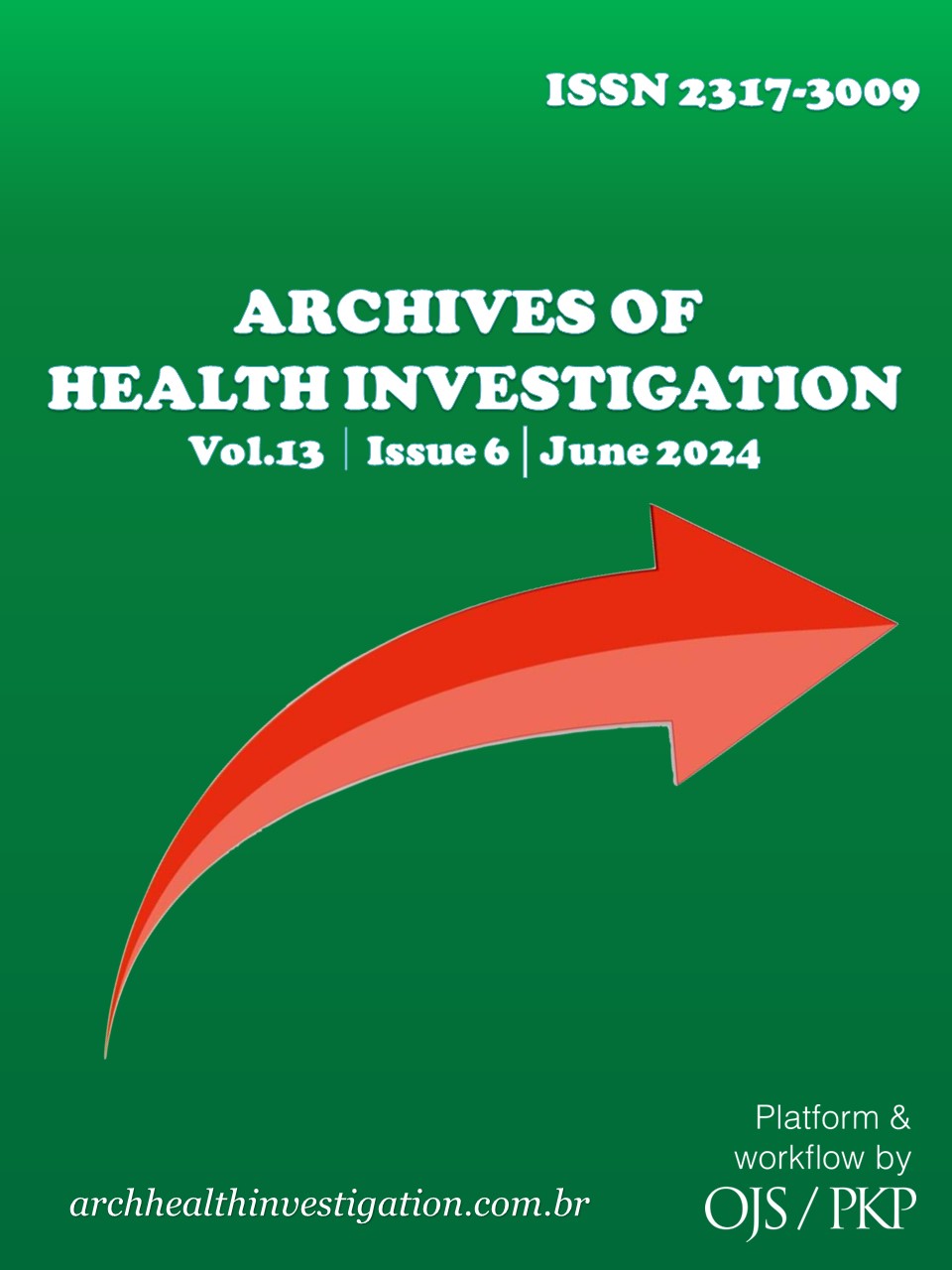Transfixing Laceration on Chin Region: Case Report
DOI:
https://doi.org/10.21270/archi.v13i6.6177Keywords:
Facial Injury, Suture, HealingAbstract
Facial lacerations correspond to cutting or perforating damage to the epithelial structure involving large extensions and depths, being one of the most common problems found in emergency units. Treatment varies according to the extent, depth, degree of contamination, etiology and time elapsed since the trauma, which is a fundamental factor in defining the outcome. The objective of this work is to direct the best conduct to the oral and maxillofacial surgeon, through a case report of a patient with transfixing laceration in the face, taking into account the relevance of the aesthetic, functional and psychological aspects involved. The case report to be addressed is of a male patient, 59 years old, who was admitted to the University Hospital Maria Aparecida Pedrossian, 24 hours after the episode of accident due to animal kicking. The involvement occurred in the anterior region of the mandible, presenting a transfixing laceration in the mental region with necrotic areas of approximately 3 cm in length, in addition to another laceration in the submental region already sutured in a Basic Health Unit. There was communication of the laceration on oroscopy and no steps on palpation, nor bone mobility, a condition confirmed by computed tomography. The treatment was performed under local anesthesia, consisting of debridement and suturing of the transfixing laceration. In addition, a dose of anti-tetanus immunoglobulin was requested and antibiotic, anti-inflammatory and analgesic therapy was prescribed, along with postoperative guidelines and outpatient follow-up scheduled for the 7th postoperative day. In the outpatient follow-up, a satisfactory aspect of the surgical approach was observed. Therefore, it is certain that the surgical treatment of transfixing laceration should be advocated, since it is linked to tissue repair, providing a more predictable aesthetic and functional result.
Downloads
References
Shaikh ZS, Worrall SF. Epidemiology of facial trauma in a sample of patients aged 1-18 years. Injury. 2002:669-71.
Clark N, Birely B, Manson PN, Slezak S, Kolk CV, Robertson B, Crawley W. High-energy ballistic and avulsive facial injuries: classification, patterns, and an algorithm for primary reconstruction. Plast Reconstr Surg. 1996;98:583-601.
Gaetti-Jardim EC, Santiago Júnior JF, Guastaldi FPS, Dias-Ribeiro E, Shinohara EH, Garcia Júnior IR, Gaetti-Jardim Jr E. Ferimentos Faciais: Relato de Caso. Rev Odontol Araçatuba. 2010;31(1):73-77.
Leite Segundo AV, Gondim DGA, Caubi AF. Tratamento dos ferimentos faciais. Rev Cir Traumatol Buco-Maxilo-fac. 2007;7:9-16.
Singh V, Malkunje L, Mohammad S, Singh N, Dhasmana S, Das SK. The maxillofacial injuries: A study. Natl J Maxillofac Surg. 2012;3(2):166-71.
Prashanth NT, Raghuveer HP, Kumar RD, Shobha ES, Rangan V, Hullale B. Posttraumatic stress disorder in facial injuries: A comparative study. J Contemp Dent Pract. 2015;16(2):118–25.
Oliveira LC, Valle LSEMB, Silva MA, Couto JN, Figueiredo CMBF, Machado T, Bassi APF, Ponzoni D. Lesões traumáticas em tecidos moles: abrasão, contusão e laceração. Arch Health Invest.2017:6 (Special Issue 5):19
Benevides BS. Remoção de corpo estranho transfixante em dorso nasal: relato de caso. RFO UPF. 2019;24(3):434-38.
Miloro M, Ghali GE, Larsen EP, Waite DP. Princípios De Cirurgia Bucomaxilofacial Peterson 3.ed, Rio de Janeiro: Guanabara Koongn;2016.
Leite Segundo AV, Gondim DGA, Caubi, AF. Tratamento dos ferimentos faciais. Rev. cir. traumatol. buco-maxilo-fac. 2007;7(1):9-16.
Jardim ECG, Silva HCL, Pereira TTM, Masocatto DC, Oliveira MM, Mendonça JCG. Treatment of midfacial fractures associated with extensive injury. Arch Health Invest. 2014;3(3):1-7.
Bleck TP. Tetanus: pathophysiology, management, and prophylaxis. Dis Mon. 1991:37:545-603.
Blaich A, Hellwig B, Bogdan C. Tetanus following an abrasion injury. Dtsch Med Wochenschr. 2006;131:979-81.
Barbosa LM, Arruda CVB, Fonseca ELG, Pinto OS, Oliveira LML, Cunha JS et al. Tratamento de lesão extensa em face decorrente de trauma. Relato de caso. BJHR. 2020;3(3):5321–5330.
Dantas RF, Dias MAP, Dantas Filho MDO, Ribeiro, ED, De Andrade GSS. Lesão de tecidos moles causada por arma branca – Revisão de literatura. Rev Odontol Univ Cid São Paulo. 2017;25:(1):40.
16.Lammers RL, Hudson DL, Seaman ME. Prediction of traumatic wound infection with a neural network-derived decision model. Am J Emerg Med. 2003;21(1):1-7.
17.American College of Emergency Physicians. Clinical policy for the initial approach to patients presenting with penetrating extremity trauma. Ann Emerg Med. 1999;33(5):612-36.
Wedmore IS. Wound care: modern evidence in the treatment of man’s age-old injuries. Emerg Med Pract. 2005;7(3):1-22.


